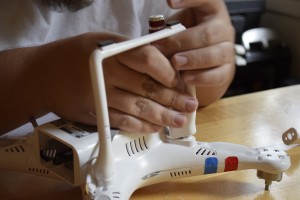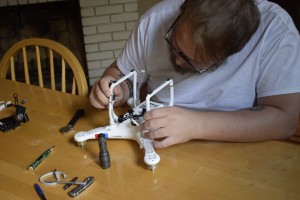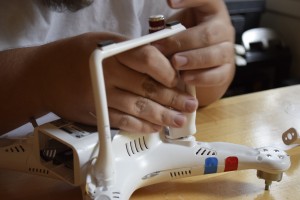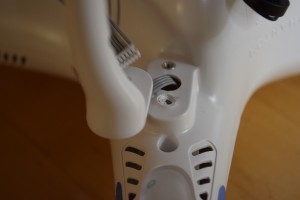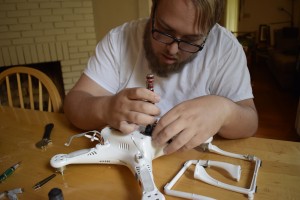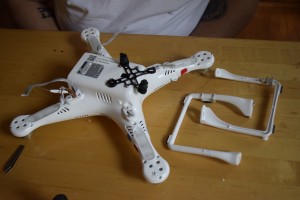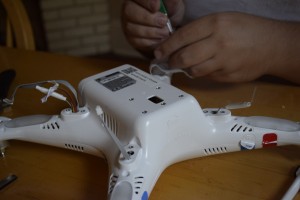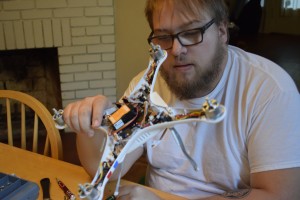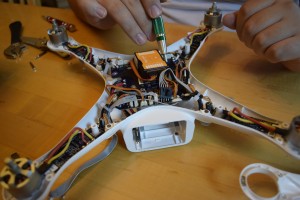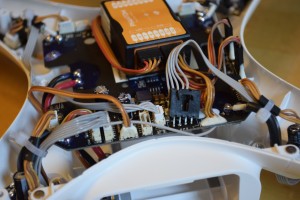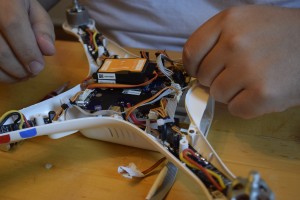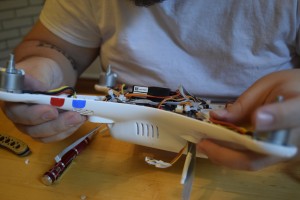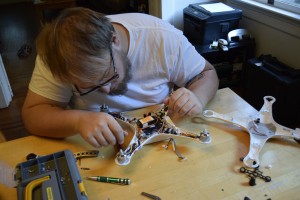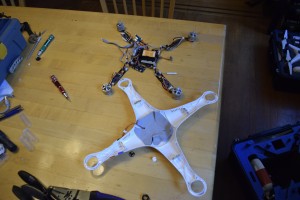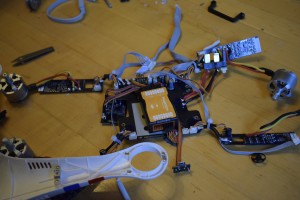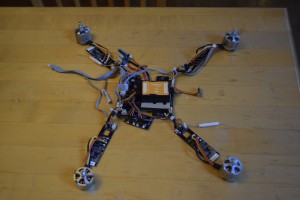Innovative work often goes in unplanned direction. One moment you’re working on a great idea… and the next you’re moving in a completely different direction than you started out… or even intended.
In certain situations this is more literal than others.
The GSU Library, along with the Anthropology Department and Geosciences Department have obtained small unmanned aerial systems from DJI called the DJI Phantom. More than a few of these systems have suffered from some unplanned innovation in the form of crashes.
These systems are specialized, and DJI ( based in china) doesn’t have the best tech support or service for US customers.
This post will essentially be a photo log of the tear down process for the DJI Phantom II owned by the library. The aircraft fell around 11 stories without power, crushing a gopro camera and it’s mount on the quad, as well as crushing the landing gear. It was also apparent that there would be internal damage to the craft as well as what was initially visible. In order to determine the extent of that damage I had to do a complete dis-assembly.
The first step in disassembling a DJI Phantom is removing the propellers and the landing gear.
Then the body shell must be disassembled
A this stage it becomes possible to begin testing components.
Once I have determined what parts look like they will need replacement, I proceed with removing the internals completely from the body shell
With the internals removed, I am ready to desolder the components which we will be replacing, and once the spares arrive put the whole thing back together.
All in all, the damage was not that bad to the quadcopter considering it fell 11 stories onto concrete. Two propellers were broken, and the body shell will need replacing. Also, the plug for the battery was shattered, and the main board, which all the components attach to, was slightly damaged, but may be repairable. The primary damage to was the gimbal and the GoPro Hero 3+ Black attached to it. This is the robotic arm that allows control of and stabilizes the camera while the aircraft is flying. Both the Gimbal and the GoPro were utterly destroyed. Because these are mounted on the bottom of the DJI Phantom, it looks as though they absorbed the brunt of the impact of the nearly 3 pound unmanned aerial system hitting the ground at terminal velocity.
Quick aside: the Phantom 2 has a takeoff weight of around 1.3kg. This fell around 11 stories, which is about 36-37 meters. It would have been traveling at around 27 meters per second when it landed which is nearly 100kph or just shy of 60mph.
Keep an eye out for more posts on the nuts and bolts of using unmanned aerial systems of all types for research applications!

